One of the most important contributing factors to life, health and longevity is the way we breathe. In fact, breath is the very essence of our life force.
The best breathing technique is the one that is most efficient, moving the most air in and out of the lungs with the least effort. In this respect, abdominal breathing wins.
While infants and small children naturally breathe exclusively with their diaphragms, as we grow into adults, we tend to lose this habit and ability. This can be due to physical and mental tension, poor posture, tight clothing, and unhealthy lifestyle habits.
The first step to improving quality of life through the breath is to re-learn the natural practice of diaphragmatic breathing.
According to Swami Niranjanananda Saraswati, author of Prana and Pranayama, “A complete revolution in the state of physical and mental wellbeing can be obtained by the mastery of abdominal breathing.”
How does it work?
The diaphragm is a strong, thin sheet of muscle attached to the lower ribs, separating the lungs from the abdominal organs.
It is shaped like a parachute, and during abdominal breathing, it flattens down against the abdominal cavity creating more space in the lungs.
This draws in more oxygen-rich air and ventilates the lower area of the lungs, where stale air can often reside for long periods of time.
The downward movement of the diaphragm on inhalation is the reason the abdomen rises upwards as you breathe in. On exhalation, stale and carbon dioxide-rich air is expelled from the lungs, the diaphragm returns to its passive dome shape, and the abdomen falls.
Why practise abdominal breathing?
For most of us, as we go about our everyday activities, only about 10% of lung capacity is used, and the diaphragm hardly moves at all. During exercise or pranayama, it can move up to 10 centimetres on each respiration.
As heart, lungs, liver, spleen, pancreas and stomach are attached to the diaphragm, this increased movement, and the increased air intake it facilitates, helps the body to function more efficiently in a number of significant ways.
It acts as a pump, assisting the heart with blood circulation and improving lymphatic drainage.
It gently stimulates the stomach and intestines, improving digestion, metabolism and excretion.
It expels more carbon dioxide, allowing the pace of respiration to slow, which calms the mind and emotions, and improves physical health.
It delivers more oxygen to the lungs, bloodstream and in turn all the cells of the body, optimising their performance and rejuvenation.
If you enjoyed the guided practice and would like to support me in sharing more you can…
It’s always appreciated. 🙏
Abdominal breathing makes you happy
One of the most immediate benefits of abdominal breathing is its ability to quickly calm the mind and emotions.
It activates the parasympathetic cardiovascular system, which is the simplest and fastest way to relax mental tension.
Studies on abdominal breathing using X-rays of diaphragmatic movement have shown that there is a symbiotic relationship between abdominal breath and state of mind.
Pleasant thoughts and sensations are seen to increase the movement of the diaphragm, as the breath becomes slower and deeper.
Similarly, increasing the movement of the diaphragm through abdominal breath calms the mind and induces mental, emotional and physical relaxation.
Deep breathing also releases endorphins into the bloodstream, helping to manage pain and decrease anxiety and fear.
How do you practise it?
Preparation
Lie in shavasana, with the body supine on the floor, and relax the whole body.
Begin to observe the natural breath. Do not change the breath, simply observe the natural flow.
Take your awareness to the diaphragm.
On inhalation, visualise the air entering the lungs, expanding and flattening the diaphragm downwards against the abdominal cavity, causing the abdomen to rise slightly.
On exhalation, feel the diaphragm and abdomen resume their natural position.
Continue observing the natural movement of the diaphragm and abdomen with each breath.
Stage 1: Natural abdominal breath
Now place your right hand on the abdomen, just above the navel, and your left hand on the centre of the chest.
On inhalation, feel the natural rise of abdomen against the right hand as the diaphragm expands downwards.
The rib cage should remain still and there should be no movement against the left hand.
On exhalation, feel the abdomen lower without effort as the diaphragm contracts.
Continue in this way for some time.
Releasing the practice
Release the practice of abdominal breathing and return the awareness to the natural breath.
Allow the breath to be spontaneous and natural.
Notice any changes in the natural breath now compared to at the beginning of the practice.
Would you like to be guided through the practice? If so I have an audio bundle available click the button to read more...
Join us on 26-28 June for the TAME YOUR MONKEY MIND FREE 3-Part Online Training to learn deeper into your practice of meditation and learn a simple, quick method to calm and focus your busy mind. Read more here.
Originally posted on Manly Yoga
PS: If you enjoyed this blog click the like button below then share it with those you care for who can also enjoy and benefit from it. 😊


